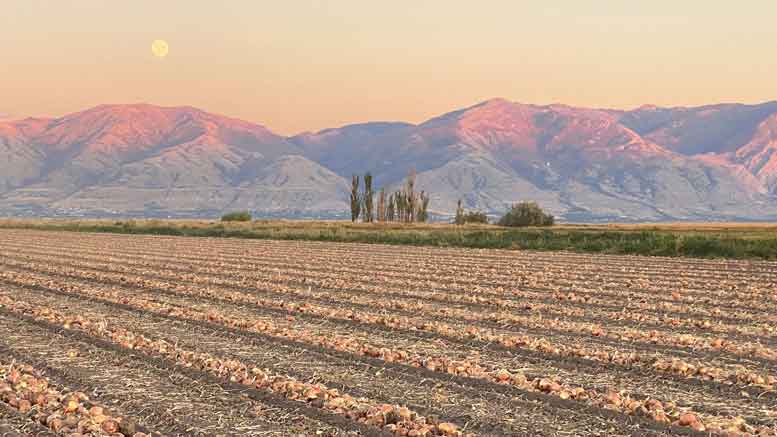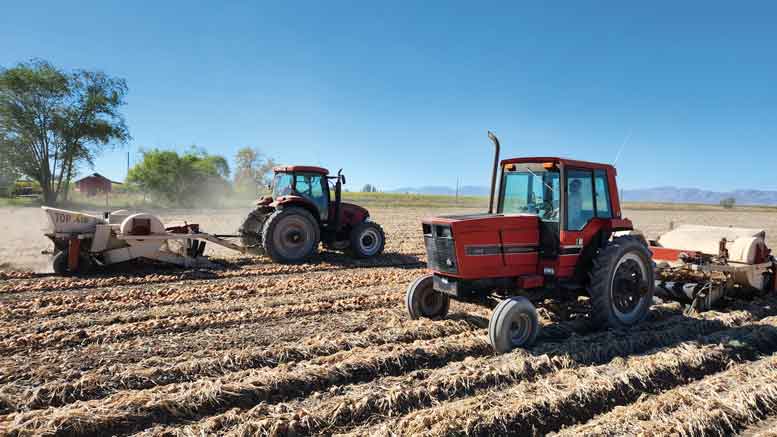|
Click to listen to this article
|
Story and photos by Dave Alexander, Publisher
To say farming is challenging is an understatement. These days, growers are faced with labor shortages, transportation issues, and rising input and fuel costs on top of the ever-present uncertainties of weather and commodity prices. In the last couple years, growers Curtis and Lisa Marble with CL Marble Farms in Corrine, Utah, have faced these challenges and more.
On 350 total acres, roughly 60 miles north of Salt Lake City, the Marbles grow small grains, corn, alfalfa, mint, pumpkins, and between 30 and 40 acres of yellow onions per year. Their onion crop is delivered to Onions 52 in bulk bins, where they get repacked, then sold and distributed to restaurants and grocery stores. When they have an onion crop, that is.
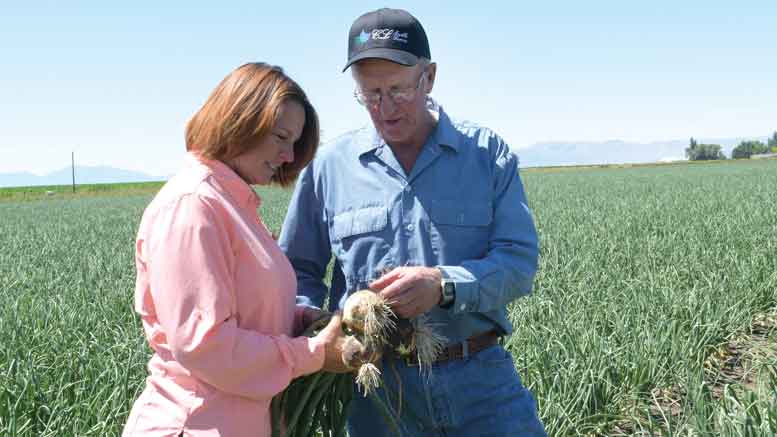
New Disease
In 2021, the Marbles lost 40 percent of their storage onions to a disease previously unknown in Utah. Fusarium proliferatum was to blame for bacterial bulb rot and the resulting crop loss. This pathogen was last seen in Idaho in 2014 but only lasted that one year.
Claudia Nischwitz with Utah State University said researchers don’t know why the pathogen causes onion bulb rot one year and then doesn’t show up for years. It is so rare that until recently, no research had been done on the pathogen in onions. Nischwitz and her students have started to study it, but since very little was known about Fusarium proliferatum in onions, they had to start with the basics. It is still unknown if it will show up in this year’s storage crop. The university will have a field trial this summer and hopefully more information next fall.
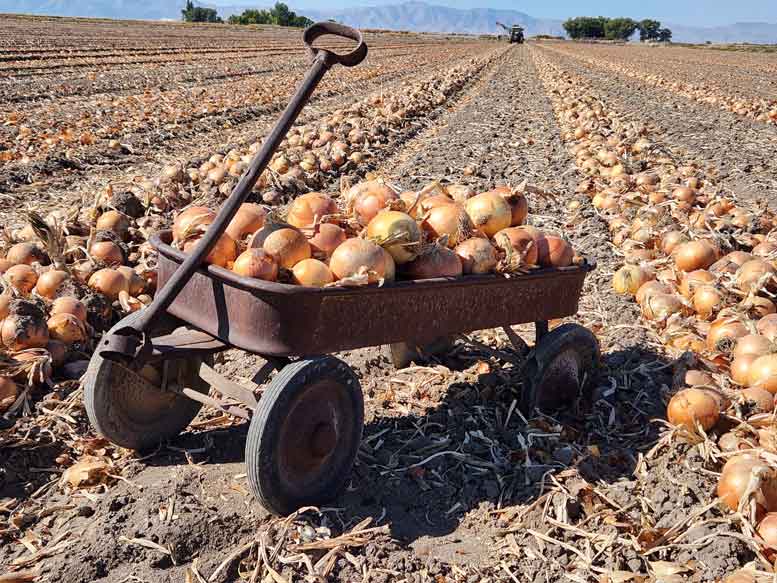
Like a Sandblaster
After the terrible 2021 season, the Marbles planted 2022 seed into ground that had good moisture, but the region had no precipitation after planting. The soil on top was very loose from working the ground for planting preparation. Then strong winds moved the soil, which filled up the furrows, and intense, wind-blasted sand sheared off the onion plants at ground level.
Marble was told by his insurance agent to disk up the field and insurance would cover the cost of the crop. He could have planted corn or something else, but decided he wanted to grow onions in that field despite being about 30 days behind at that point. Marble said he didn’t plant onions to just dig them up. The resulting insurance payment barely covered the cost of the seed to replant.
“I am not a fan of insurance, and it’s not worth the paper it’s written on. Insurance is a necessary evil,” Marble said, adding that he thinks rather than just insuring the crop, whole farm insurance is a better option because the revenue of the entire farm is covered.
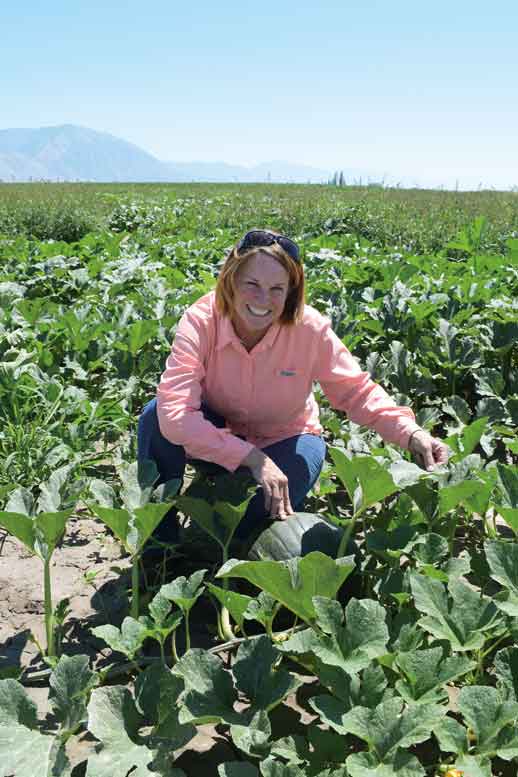
The Farm
After 35 years of growing onions, Marble said the farm’s soil is “past the new soil stage,” so they rent ground as much as they can to keep them in the onion business. But Marble said that the Joaquin yellow variety is very good for tired ground and does well in the area.
“In ground that’s had onions in it year after year, Joaquin still produces very well,” he said.
The Marbles will normally grow onions for two years in a row on the same flood-irrigated ground and then stay out of it for eight years. On those off years, mint, pumpkins and winter squash are grown on those plots.
Lisa Marble handles the pumpkin business that has turned out to be a very lucrative market for the farm. They supply pumpkins to a regional chain of grocery stores, as well as farmers markets and fruit stands throughout the state of Utah.
“It pays off very well,” Marble said.
Mint has also been a good source of revenue for the farm. The mint oil they distill onsite ships to Meridian, Idaho, for use in products such as gum, candy and toothpaste.
Curtis’ grandfather started the operation, followed by his father from whom he bought the farm. In fact, Marble Farms is recognized by the Utah Farm Bureau Federation as a Century Farm, one that has been continuously owned by a single family for 100 years or more.
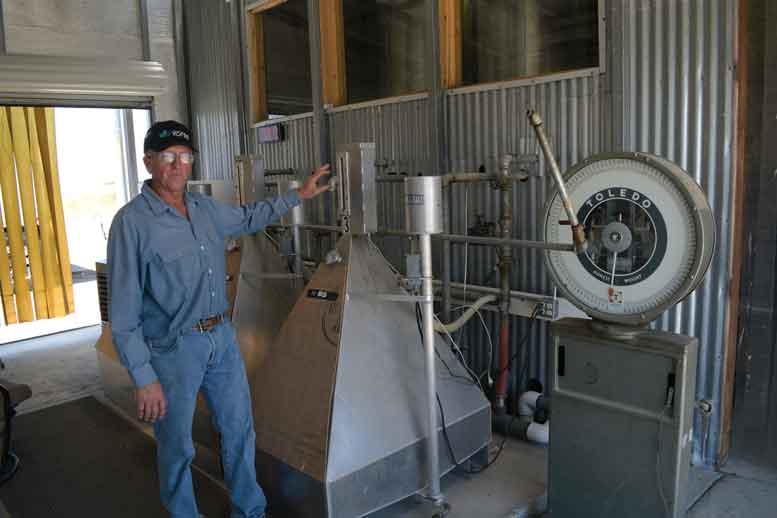
Rebound
Despite having to replant his sawed-off onion plants, 2022 was a rebound year for Marble Farms after the disastrous 2021 diseased crop. Marble said he was very pleased with the 2022 harvest and characterized the season as a 9.5 on a 1-to-10 scale.
Even with the difficulties Marble Farms has faced in the last two seasons and before he knew of the 2022 crop’s success, Marble maintained a positive and upbeat attitude and accepts challenges.
“Farmers are optimists. That’s the business we’re in,” Marble said. “I’m an onion farmer. I have been for over 30 years, and I intend to keep doing that.”
